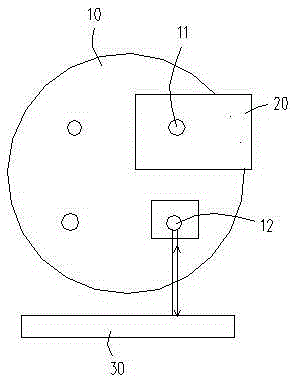Method for measuring multidirectional displacement by using multi-core fiber
A multi-core optical fiber and multi-directional technology, applied in the field of optical fiber, achieves the effect of high measurement accuracy
- Summary
- Abstract
- Description
- Claims
- Application Information
AI Technical Summary
Problems solved by technology
Method used
Image
Examples
Embodiment Construction
[0023] A preferred embodiment of the present invention will be described in detail below with reference to the accompanying drawings.
[0024] The equipment used in the multi-directional displacement measurement of the multi-core optical fiber in the present invention includes a laser, a fiber grating demodulator, a fan-out device, a photodetector, an acquisition card and a computer, wherein the laser is used as a light source, and the multi-core optical fiber and the photodetector are connected together. The connected fan-out device is also an important part of the measurement system. Its function is to output each fiber core of the connected multi-core fiber in the form of a single-mode fiber, and the single-mode fiber is placed in a V-groove array. When installing, firstly couple the V-groove array composed of four single-mode optical fibers to the V-groove port of the fan-out device, and adjust it by using reflectivity matching gel and a manual three-dimensional translation...
PUM
 Login to View More
Login to View More Abstract
Description
Claims
Application Information
 Login to View More
Login to View More - R&D
- Intellectual Property
- Life Sciences
- Materials
- Tech Scout
- Unparalleled Data Quality
- Higher Quality Content
- 60% Fewer Hallucinations
Browse by: Latest US Patents, China's latest patents, Technical Efficacy Thesaurus, Application Domain, Technology Topic, Popular Technical Reports.
© 2025 PatSnap. All rights reserved.Legal|Privacy policy|Modern Slavery Act Transparency Statement|Sitemap|About US| Contact US: help@patsnap.com



